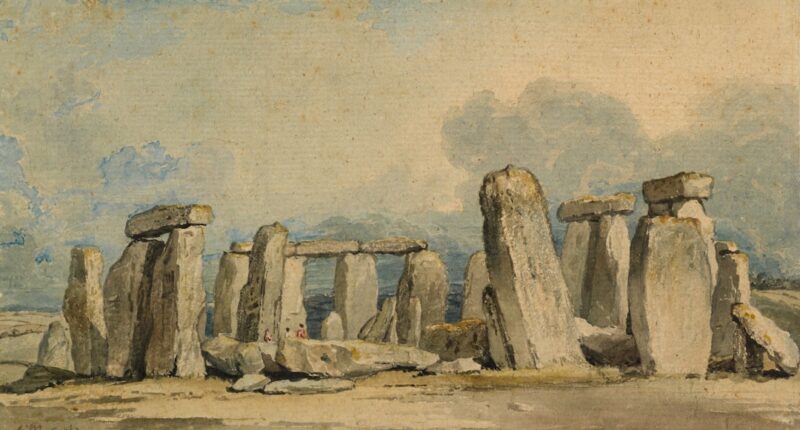The NFT (non-fungible token) phenomenon has significantly impacted the digital landscape, transforming the way digital art and assets are bought, sold, and collected. NFTs are unique digital tokens that represent ownership of specific digital items or content, including artwork, music, videos, and even social media posts. The distinguishing feature of NFTs is their non-fungible nature, meaning each token is unique and cannot be replicated or exchanged for an equivalent item.
This uniqueness has generated substantial interest among collectors, artists, and investors, resulting in a significant increase in NFT sales and valuations. Recent trends in the NFT market indicate growing interest in digital art and collectibles, as well as increased acceptance of NFTs as a legitimate investment option. High-profile sales of NFT artworks by established artists, such as Beeple’s “Everydays: The First 5000 Days” which sold for $69 million at auction, have brought widespread attention to the NFT market and stimulated the creation of new NFT collections.
Furthermore, the integration of NFTs into various sectors, including gaming, entertainment, and sports, has expanded the potential applications for these digital tokens, further driving their popularity. As the NFT market continues to evolve, it is crucial for collectors and investors to remain informed about the latest trends and developments to make well-informed decisions regarding their NFT investments.
Key Takeaways
- NFTs are revolutionizing the art market by providing a new way to buy, sell, and trade digital art.
- Ethereum and Bitcoin are driving the NFT boom, with their blockchain technology enabling secure and transparent transactions.
- Curating a lucrative digital art portfolio involves researching, diversifying, and staying informed about the latest trends in NFT collections.
- Ethereum’s role in NFT collections is significant, as its smart contracts and decentralized platform are shaping the future of digital art investments.
- Bitcoin’s impact on NFTs is evident, as the cryptocurrency’s popularity and value have contributed to the growth of the NFT market.
The Rise of Ethereum and Bitcoin in the NFT Space: How Cryptocurrency is Driving the NFT Boom
The Pivotal Role of Ethereum
Ethereum has emerged as the leading blockchain platform for creating and trading NFTs, thanks to its smart contract functionality and robust infrastructure for decentralized applications. The Ethereum blockchain’s support for NFT standards such as ERC-721 and ERC-1155 has made it the go-to platform for artists and creators looking to tokenize their digital assets and engage with a global audience of collectors.
The Decentralized NFT Marketplace
The decentralized nature of Ethereum has enabled the development of NFT marketplaces and platforms that facilitate the buying, selling, and trading of digital collectibles with minimal intermediaries. This has created a seamless and efficient experience for users, allowing them to interact directly with one another and transact with confidence.
The Influence of Bitcoin
Bitcoin, while not directly involved in the creation and trading of NFTs, has contributed to the NFT boom through its influence on the broader cryptocurrency market. The rising value and mainstream adoption of Bitcoin have generated significant wealth for early adopters and cryptocurrency enthusiasts, leading to increased demand for alternative investment opportunities such as NFTs. As a result, Bitcoin holders have been actively participating in the NFT market, leveraging their cryptocurrency holdings to acquire digital art and collectibles.
Navigating the World of NFT Collections: Tips for Curating a Lucrative Digital Art Portfolio

Curating a lucrative NFT collection requires careful consideration of various factors, including the quality of the digital assets, the reputation of the creators, and the long-term potential for appreciation. When building an NFT portfolio, it is essential to diversify across different categories of digital art and collectibles to minimize risk and maximize potential returns. This may involve acquiring NFTs from emerging artists with high growth potential, investing in established creators with a track record of successful sales, and exploring niche markets or thematic collections that cater to specific interests or trends.
Furthermore, conducting thorough due diligence on the authenticity and provenance of NFTs is crucial to avoid potential scams or copyright issues. Verifying the ownership rights and intellectual property status of digital assets before making a purchase can help mitigate legal risks and ensure that the NFTs in your collection are legitimate and legally compliant. Additionally, staying informed about market trends and emerging artists through online communities, social media platforms, and industry publications can provide valuable insights for making informed decisions about which NFTs to acquire and when to buy or sell them.
By staying proactive and well-informed, collectors can navigate the world of NFT collections with confidence and build a portfolio that holds long-term value.
The Role of Ethereum in NFT Collections: How ETH is Shaping the Future of Digital Art Investments
| Metrics | Data |
|---|---|
| Number of NFT Collections | Over 10,000 |
| Total Value of NFT Sales | Over 2 billion |
| Percentage of NFTs using Ethereum | Over 90% |
| Number of Ethereum-based NFT Marketplaces | Over 50 |
| Percentage of NFT Investors using ETH | Around 70% |
Ethereum’s role in NFT collections extends beyond its technical infrastructure as a blockchain platform; it also influences the dynamics of digital art investments and the broader ecosystem of decentralized finance (DeFi). The use of Ethereum as the primary blockchain for creating and trading NFTs has established a symbiotic relationship between digital art and cryptocurrency, enabling seamless integration with DeFi protocols such as decentralized exchanges (DEXs), liquidity pools, and yield farming. This convergence has opened up new opportunities for investors to leverage their NFT holdings as collateral for borrowing or lending assets within decentralized finance platforms, unlocking additional value from their digital art portfolios.
Moreover, Ethereum’s support for programmable smart contracts has facilitated the development of innovative financial instruments and investment vehicles tailored specifically for NFT collections. This includes fractionalized ownership models that enable multiple investors to co-own high-value NFTs through tokenization, as well as automated royalty distributions for creators based on secondary sales of their digital assets. These advancements in financial infrastructure have enhanced the liquidity and fungibility of NFTs, making them more accessible and tradable within decentralized markets while providing creators with greater control over their intellectual property rights and revenue streams.
As Ethereum continues to evolve and expand its capabilities through upgrades such as Ethereum 2.0, its influence on the future of digital art investments and NFT collections is poised to grow even further.
Bitcoin’s Impact on NFTs: Exploring the Relationship Between BTC and the NFT Market
While Bitcoin’s primary function as a store of value and medium of exchange differs from Ethereum’s utility as a platform for creating and trading NFTs, its impact on the NFT market is significant due to its influence on investor sentiment and market dynamics. The rising value of Bitcoin has generated substantial wealth for early adopters and institutional investors, leading to increased demand for alternative investment opportunities such as digital art and collectibles. This influx of capital into the cryptocurrency market has spilled over into the NFT space, driving up valuations for high-profile artworks and creating a sense of scarcity and exclusivity around rare digital assets.
Furthermore, Bitcoin’s role as a leading cryptocurrency has elevated its status as a symbol of digital wealth and prestige, making it an attractive medium for acquiring high-value NFTs among affluent collectors and art enthusiasts. The convergence of Bitcoin and NFTs has also led to innovative collaborations between artists, creators, and cryptocurrency platforms to tokenize physical artworks or create limited-edition digital collectibles that are exclusively available for purchase with Bitcoin. These initiatives have expanded the reach of Bitcoin within the art world and positioned it as a viable currency for acquiring premium NFT collections, further solidifying its impact on the evolving landscape of digital art investments.
Investing in NFT Collections: Strategies for Building a Million-Dollar Digital Art Portfolio

Acquiring High-Quality NFTs
One approach to achieving this goal is to focus on acquiring high-quality, rare, or historically significant NFTs that have strong potential for long-term appreciation. This may involve targeting artworks by renowned artists with established reputations or historical significance within the art world, as well as identifying emerging talents with unique creative visions or innovative approaches to digital art.
Leveraging DeFi Protocols
Another strategy for building a million-dollar NFT portfolio is to leverage decentralized finance (DeFi) protocols to maximize the value of your digital assets through yield farming, liquidity provision, or collateralized lending. By participating in DeFi platforms that support NFT collateralization or fractionalized ownership models, investors can unlock additional liquidity from their NFT holdings while earning passive income or accessing new investment opportunities within decentralized markets.
Staying Informed and Building Relationships
By staying informed about new developments and cultivating relationships with artists, collectors, and industry professionals, investors can position themselves to capitalize on lucrative opportunities for building a million-dollar digital art portfolio. Actively engaging with online communities, industry events, and social media platforms can provide valuable networking opportunities and insights into emerging trends or investment prospects within the NFT market.
The Future of NFTs: Predicting the Next Big Trends in the NFT Market and How to Stay Ahead
As the NFT market continues to evolve and mature, several key trends are expected to shape its future trajectory and present new opportunities for collectors, investors, and creators alike. One major trend is the integration of augmented reality (AR) and virtual reality (VR) technologies into NFT experiences, enabling immersive interactions with digital art and collectibles within virtual environments or real-world settings. This convergence of digital art with AR/VR capabilities has the potential to enhance the value proposition of NFTs by offering unique experiences that transcend traditional forms of artistic expression.
Another emerging trend in the NFT market is the rise of environmental sustainability initiatives aimed at reducing the carbon footprint associated with blockchain transactions and energy consumption. As concerns about the environmental impact of blockchain technology continue to grow, there is increasing demand for eco-friendly solutions that prioritize energy efficiency and carbon neutrality within NFT ecosystems. This shift towards sustainable practices presents an opportunity for innovators to develop eco-conscious blockchain platforms or carbon-offsetting mechanisms that align with ethical standards while supporting the continued growth of the NFT market.
To stay ahead in this rapidly evolving landscape, participants in the NFT market should remain vigilant about regulatory developments related to digital assets and blockchain technology while actively engaging with industry stakeholders to shape responsible practices that promote transparency, security, and ethical conduct within the ecosystem. By embracing innovation while upholding ethical standards, stakeholders can contribute to a sustainable future for NFTs while unlocking new possibilities for creative expression, investment opportunities, and cultural impact within the digital art space.
FAQs
What is an NFT collection?
An NFT collection refers to a group of digital assets that are tokenized as non-fungible tokens (NFTs). These NFTs are unique digital items that are stored on a blockchain and represent ownership of a specific piece of digital content, such as artwork, videos, music, or other digital files.
What is digital art curation?
Digital art curation involves the selection and organization of digital artworks into a cohesive and meaningful collection. This process often involves identifying high-quality digital art pieces, establishing a theme or narrative for the collection, and creating a portfolio that reflects the curator’s artistic vision.
How can a digital art portfolio be worth millions?
A digital art portfolio can be worth millions if it contains rare, high-demand, and culturally significant NFTs. Factors that contribute to the value of a digital art portfolio include the rarity and uniqueness of the NFTs, the reputation of the artists, the historical significance of the artworks, and the demand from collectors and investors.
What are some tips for curating a valuable digital art portfolio?
Some tips for curating a valuable digital art portfolio include conducting thorough research on the NFT market and trends, seeking out emerging and established digital artists, focusing on quality and rarity when selecting NFTs, diversifying the collection to appeal to a wide range of collectors, and staying informed about the latest developments in the digital art world.
What are some potential risks associated with investing in NFT collections?
Some potential risks associated with investing in NFT collections include market volatility, regulatory uncertainty, the potential for copyright infringement or plagiarism, the risk of technological obsolescence, and the challenge of accurately valuing digital assets. It’s important for investors to conduct due diligence and seek professional advice before investing in NFT collections.





